
A Rolls Royce car has been adapted to sell ice cream. Can be seen in the summer in the south-west corner of Kensington Gardens. Probably the only car of its type in this role.


A gate called Marble Arch was built to enter the royal palace. But it was too narrow for the royal transport, and when the palace was expanded, it was moved to the north-east corner of Hyde Park. But why is there a door in it? The park used to host large-scale events and the arc has facilities for a police unit. Currently, this is no longer in use.


In some parts of the internet, you can find claims that Marble Arch has not been moved. Or that the triumphal arch was moved from the royal palace to Hyde Park Corner instead. There is a triumphal arch, but with one passageway, not three.
Paddington's name is probably associated with Agatha Christie's crime novel for many. But also for many from the series of children's books with the bear of that name. The books have also been published in Estonian, they have been made into a DVD and read as a bedtime story on the radio. Where is this cute teddy bear? At Paddington train station of course. Go to the left wall and from there you can continue along the platform without going through the ticket gates.

The large stained-glass window of the church St-Martin-in-the-Fields was broken in the bombings of the WWII. The new window was designed by Iranian female artist Shirazeh Houshiary. It is a very peculiar window indeed. Well worth a visit, right by Trafalgar Square.
Robert Boyle, the discoverer of the eponymous law of physics, is also buried in the church.

Interesting place behind King's Cross train station. There are nice steps to sit and watch the canal. Also four areas with fountains in which the height of the water changes all the time. Children like it very much. But in the old days there was water in this place. Here ships were unloaded with grain. And these four areas of fountains mark the very places where the ships stood.



One of the strangest street names ever to come across in London was Of Alley. It was renamed in 1855 and is now called York Place, but the street sign still has the old name in small print.
A large plot of land next to what is now Charing Cross railway station once belonged to a man called George Villiers, Duke of Buckingham. He had inherited this land from his father, who bore the same name and title. In 1670, he decided to sell the land to developers who planned to build many new houses and streets here. The land was sold, but with a very strange additional condition in the sales contract. All new streets to be built had to bear the seller's name. And so the streets named George Court, Villiers Street, Duke Street, Buckingham Street and finally Of Alley was born. There were no more components to take from the name... Some names have been preserved, some have not. But it's worth going to see the sign on the street corner.
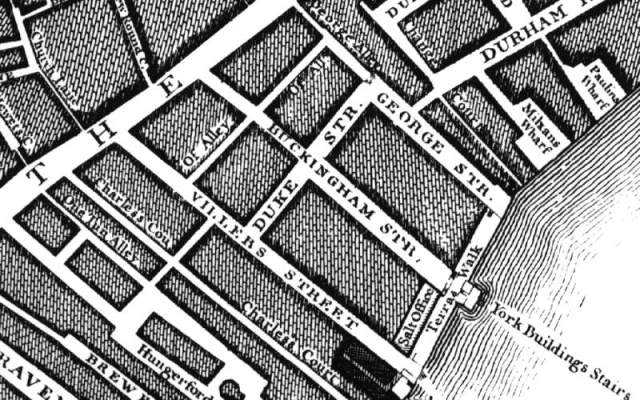


It is a tea house founded by Thomas Twining in 1709. It is still operating today. The facade of the building features a design that is considered to be the world's oldest corporate logo still in use.
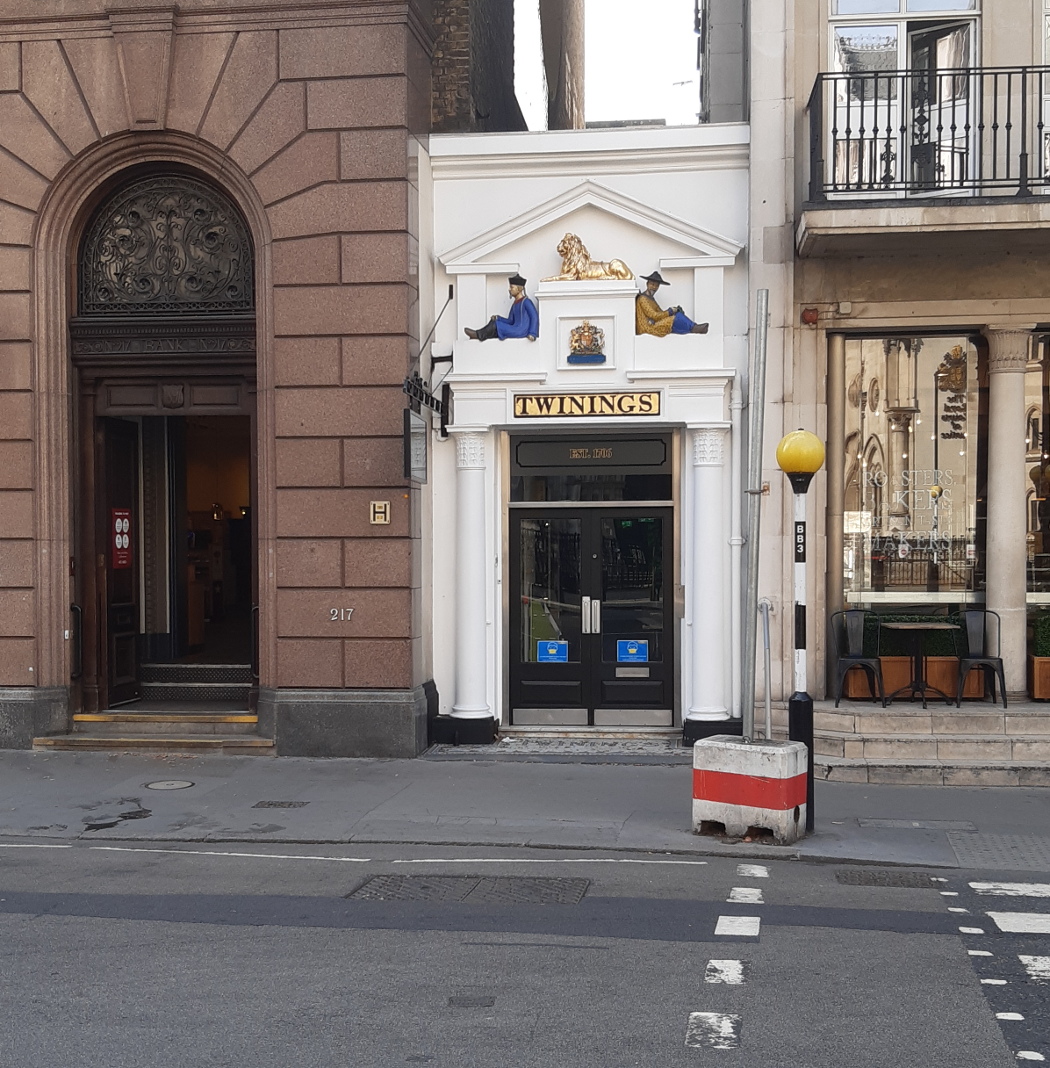

There is also a box here in the shop that says T.I.P. It means: To Insure Promptness. This is where the expression "tip" originated.
If you turn around 180 degrees, you will see a building that could be considered a cathedral. But it's actually The Royal Court of Justice. If you bother to take a closer look at this magnificent building, you can discover a colonnade in which one column is shorter than the others. This is done on purpose. The builders found that only God could build something that would be perfect.
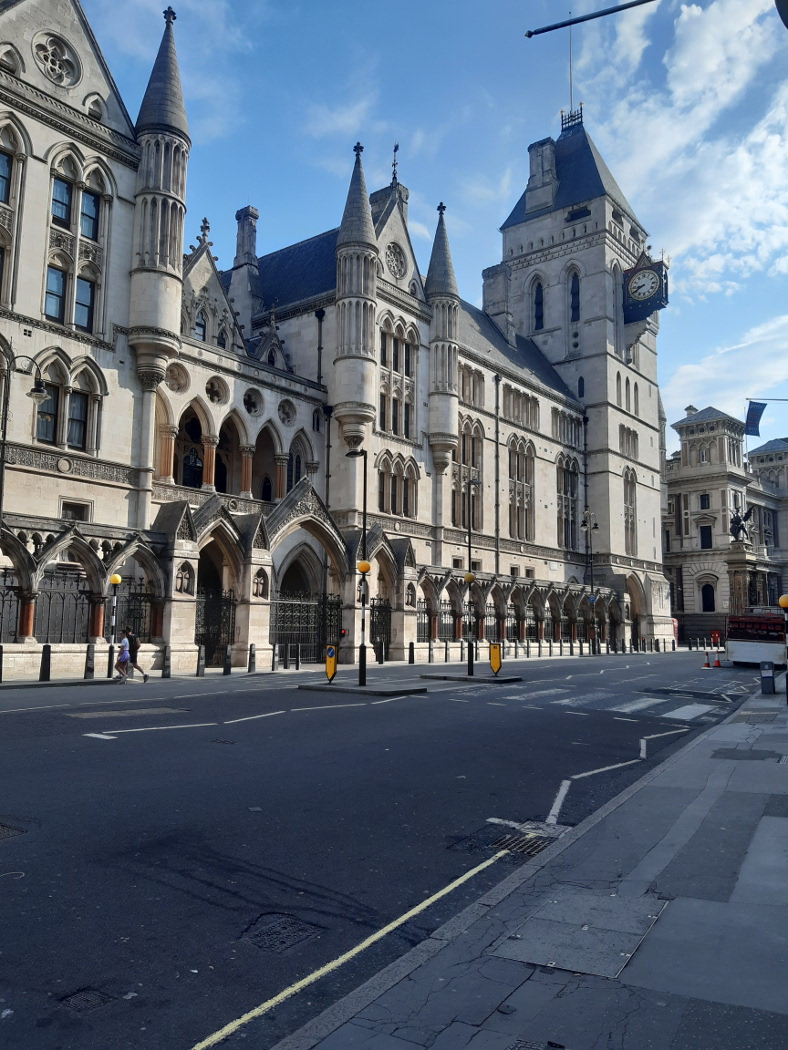

It is a sculpture made from a hollow oak trunk and depicts a multitude of fairies, elves and animals. It was made by Ivor Innes in 1930 from an oak log sourced from Richmond Park. Pink Floyd's album Ummagumma features a photo of the band's guitarist and singer David Gilmour standing in front of this sculpture. Writer and actor Spike Milligan donated in 1997 the larger amount of money with which the statue was restored. This peculiar object stands next to the outdoor cafe behind the children's playground named after Princess Diana.

Have you ever drank coffee and eaten pastries in a public toilet? In the upscale Fitzrovia district, an underground public toilet has been turned into a nice cafe. It may seem strange at first, but it is actually a very hygienic and interesting place.
A restaurant for lovers of special experiences. Eating takes place in absolute darkness. Served by blind waiters. At least you don't have to be ashamed if something you eat spills on the tablecloth in a restaurant. 
 In the old days, the British fleet was in trouble with pirates. Fighting crime was a concern of the Admiralty. The pirates were also caught and the only possible punishment for them was hanging. To scare off potential future pirates, they were hanged for 400 years at a place called Wapping right on the river bank, so that everything could be seen by passing ships. The most famous pirate who hang here was probably Captain Kidd, who has been the subject of books and films. Unfortunately, the exact location is not known, see the map above for possible locations.
In the old days, the British fleet was in trouble with pirates. Fighting crime was a concern of the Admiralty. The pirates were also caught and the only possible punishment for them was hanging. To scare off potential future pirates, they were hanged for 400 years at a place called Wapping right on the river bank, so that everything could be seen by passing ships. The most famous pirate who hang here was probably Captain Kidd, who has been the subject of books and films. Unfortunately, the exact location is not known, see the map above for possible locations.
There are many pubs on the street closest to the river (Wapping High Street) and if you find a passage between them that leads to the river, behind many of them there is a mock gallows erected by the river. Business is business.
In fact, there are as many as three pubs competing for the 'right spot': the Prospect of Whitby, the Captain Kidd and the Town of Ramsgate.
About 40,000 tourists cross the Tower Bridge every day, but there is one thing most of them don't notice, even though it's very visible. If you approach the bridge from the north, there are street lamps on both sides of the road. They are on top of carved cast iron posts. But just before reaching the suspension bridge's supporting structures, there is an irregularity. If the posts are otherwise regularly spaced, on the right side there is one extra post between the others. And there is no lantern at the end of it. It turns out that it's not a lamp post. It's a chimney instead. Under the bridge, there were rest rooms for the bridge guards, and the chimney belongs to the heating hearth that heated the rooms, which was heated with coal. After strict anti-pollution laws came into force in 1956, no more smoke has risen from this chimney. But it is still there.
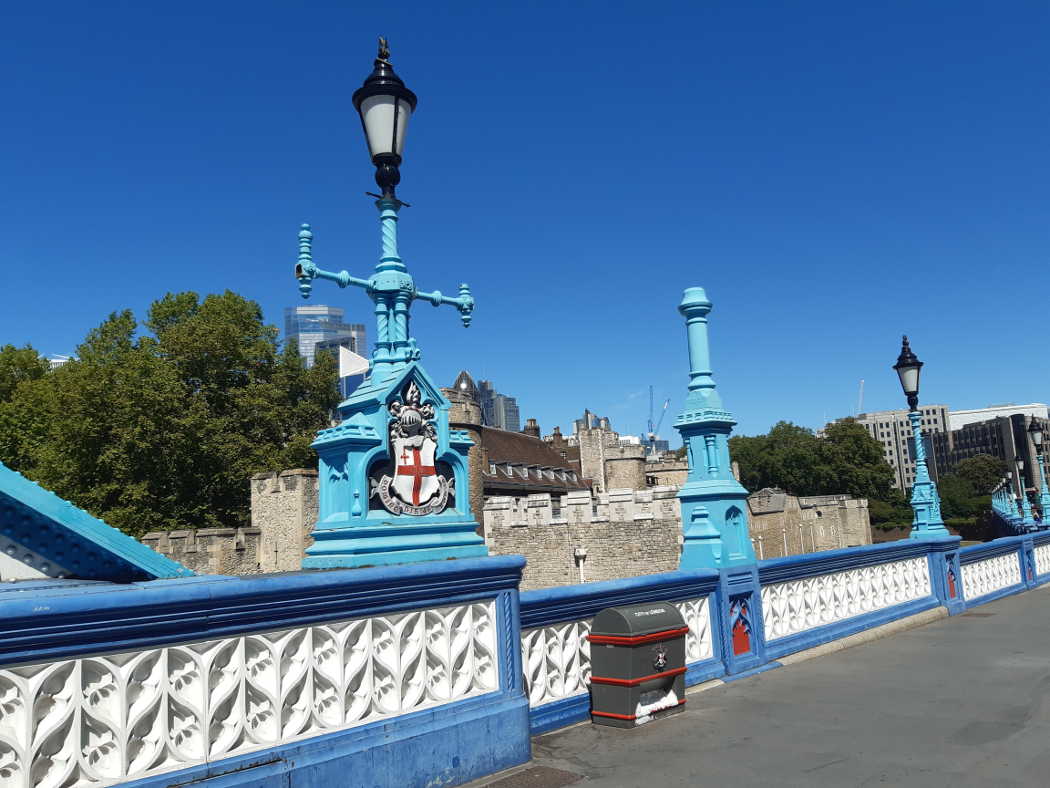

You can see the statue just behind the church St Martin in the Fields on the pedestrian street. This is the first monument to a famous writer outside of Ireland since 1998, the artist Maggi Hambling. It is as if the writer was lying in a coffin, what the artist wanted to say with that, it is hard to guess. The writer's right hand seems to be holding something. In fact, the figure was originally holding a cigarette. But it was repeatedly broken off from the statue and finally abandoned to replace it.

On October 16, 1987, England and France were hit by a major storm. 22 people died, 15 million trees were destroyed in England. 250,000 trees were broken in London. After the storm, the Evening Standard laid out £60,000 to plant new trees. The tree named The English Oak was planted in front of Charing Cross station a year after the storm. Behind the tree is a phone box (black in colour for some reason) and there are commemorative plaques with text explaining the origin of the tree. While admiring the trees, do not step on other people's feet - it is a very crowded place.
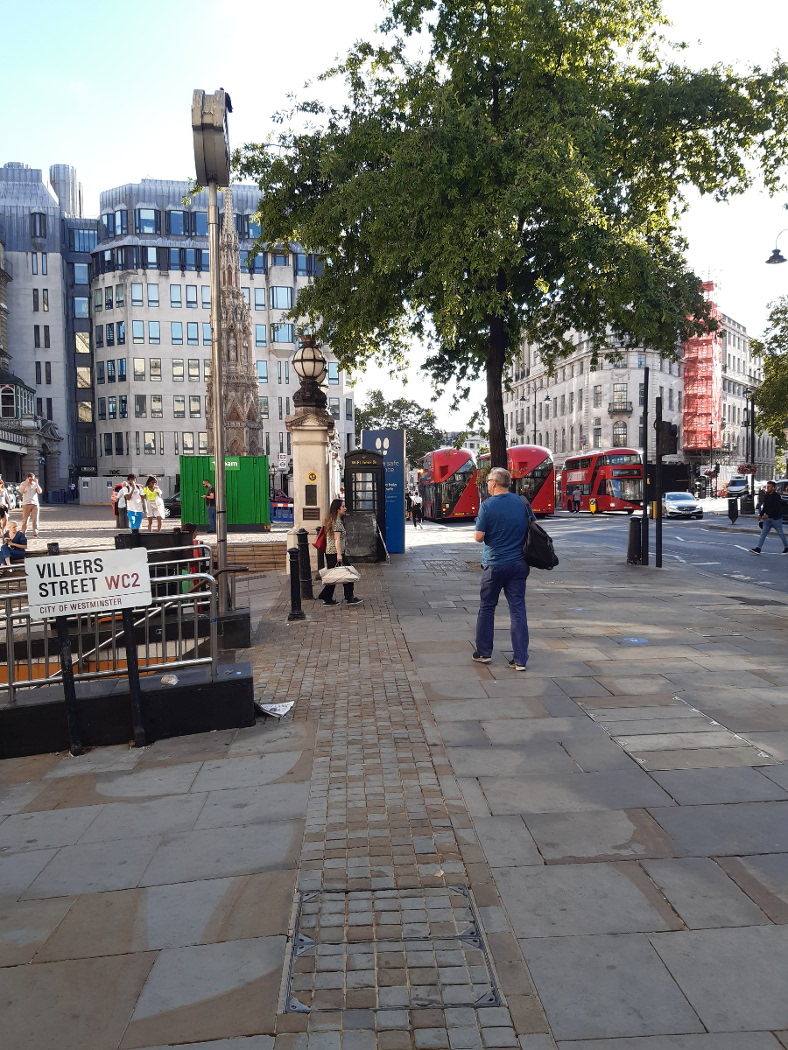

The Duke of Wellington (Arthur Wellesley, 1st Duke of Wellington) was the commander under whose leadership Napoleon's forces were defeated in the Battle of Waterloo in 1815. The duke became a national hero, several monuments were erected to him, for example, an equestrian statue near the Hyde Park Corner Underground station, or another equestrian statue in front of the Bank of England. High-class women from the Ladies of England also wanted to pay their respects and commissioned a statue from sculptor Richard Westmacott. The statue was cast from cannons obtained as spoils of war (from the battles of Salamanca (1812), Vitoria (1813), Toulouse (1814) and Waterloo) and weighs 33 tons. The statue was placed in the south-east corner of Hyde Park on June 18, 1822. The statue is modelled after the statue of Achilles in Monte Cavallo, Italy, but the head represents the Duke himself. The figure caused quite a stir and a scandal because the hero is completely naked. Later, a fig leaf was added to the statue to appease the ladies of London. There were other criticisms, such as the shield being too small to protect himself from enemies. But the statue is standing in its place even now, go see it.

If you want to see bronze statues, but politicians and kings are bored, Lower Grosvenor Garden offers a very interesting hunting scene from the savannah. The statue is by Jonathan Kenworthy and was originally intended to be placed in a castle garden. But later it was decided to put it in a place where everyone could see it.
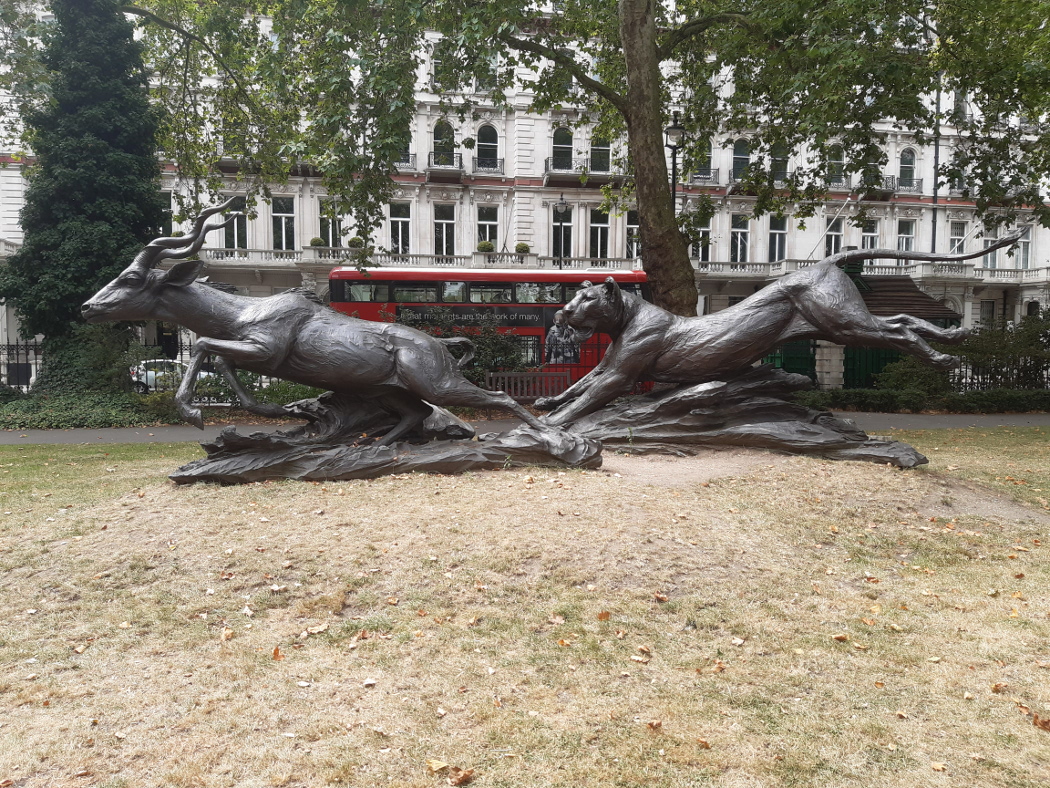

It is an block of flats built in 1934. It is an experimental building in which a new lifestyle was tried to be introduced. The real thing that came out... The house is the first residential building in London that was cast entirely from concrete. There are 32 flats in the building, and they are connected by a common balcony with no fences between the flats. The house was designed by Wells Coates. The name of the house is derived from isometric projection and constructivist aesthetics. 1941 Agatha Christie moved into the house because her previous residence was bombed. In the opinion of its creators, the Isobar restaurant on the roof was supposed to emphasize the collectivism of the residents, so that all the residents could eat together. But I guess the experiment didn't go as the creators hoped. Anyway, in the sixties, several dozen Soviet spies lived in the house...
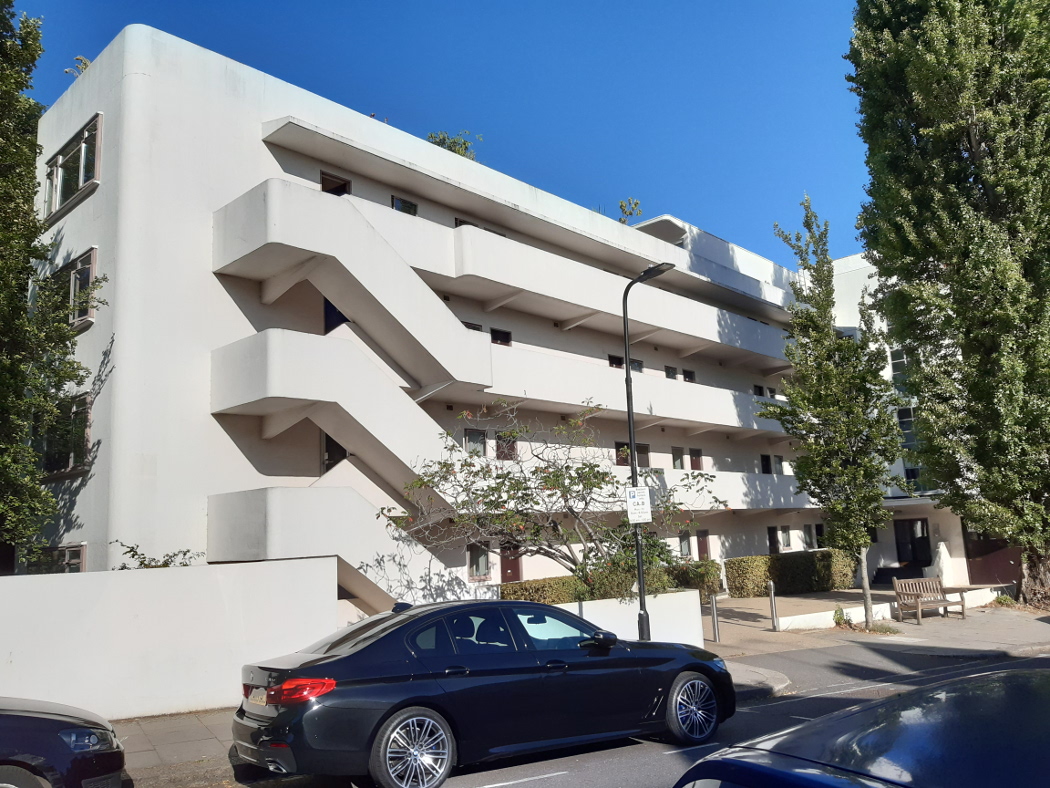

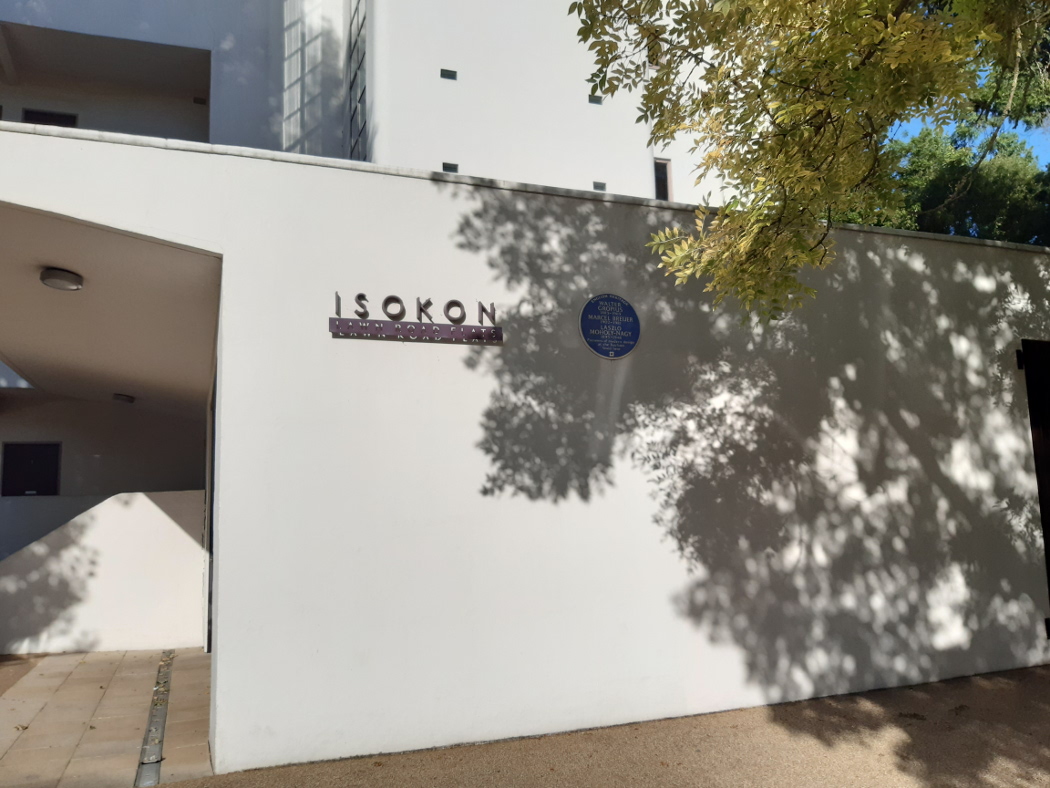

Many know the north tower of the Houses of Parliament as Big Ben, which is actually called the Elizabeth Tower (Big Ben is the bell inside it that makes the note E). The other towers of the same building are called Victoria Tower and Central Tower. But there is also Little Ben. It is located quite close to the Victoria railway station and is a small tower with four clocks a few meters high.


Sometime in the sixties of the last century, the idea arose that car traffic and pedestrians should be separated from each other. For this purpose, pedestrian flyovers were built over roads and balcony-like walkways on buildings at the height of the second/third floor, where you could walk for hundreds of meters without ever descending to street level. You can see such "balconies" covering entire blocks, for example, if you start walking east along Queen Victoria St from Blackfriars station. Even one of the station entrances located there at the height of the third floor. But nothing came of the idea. Everything was too rustic and, for example, the entrances to shops were still at street level. No one liked the constant climbing of stairs either. One absurd example of an abandoned venture is on the corner of Swan Lane and Lower Thames Street. A magnificent staircase begins there. If you bother to climb up, you'll find that this staircase doesn't really lead anywhere.


If you happen to be walking in a place called Fulham from Parsons Green tube station in a south-east direction (such as Studdridge Street and the streets branching off it), be sure to look up. All houses are topped with stone lion statues, at least three for each house. Why so? The development of these streets was led by a real estate developer named James Nichols around 1890. He thought it would be nice to put a statue of a lion on some of the houses, but he got too many zeros on the order sheet. So he mistakenly ordered 1,500 of these statues instead of 15.


By David Wynne. Located at the north end of the Albert Bridge. The sculpture depicts the author's 9-year-old son. The author of the statue was a biologist by education, but it seems that he had the soul of an engineer. I can't help wondering how this boy stands up there and doesn't break his arm.

There was once a church here, but it was destroyed in the bombing of WWII. But the tower remained. A rather peculiar house has now been built there. An interesting solution and, in my opinion, even nice. But actually it would be strange to live in a church. 
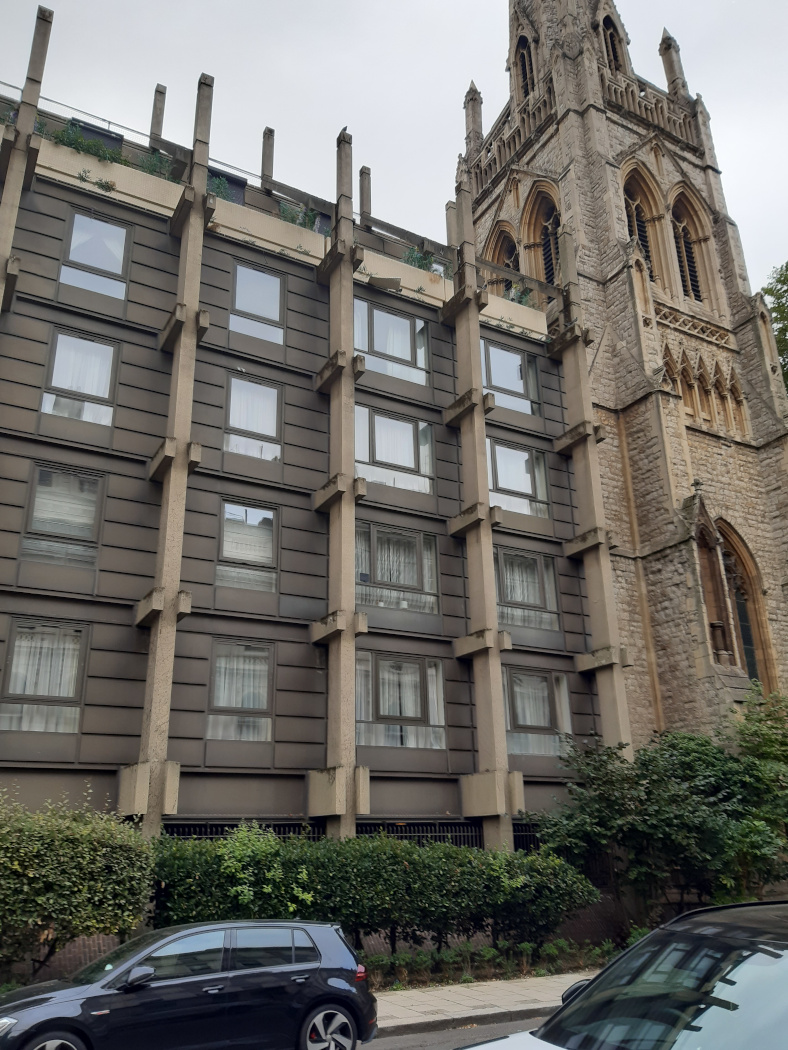

Tomb in Brompton Cemetery. This door has not been opened for over a hundred years, but people say that a perfectly working time machine is hidden there. Whether you believe that is of course up to you... 
You can see more about this and other interesting things in this cemetery: Video

Just a nice fairy-tale house, from 1888. It's small, but it seems that it has a second (GB: first) floor and there is a bathroom and a toilet. Look carefully at those pipes on the right, you don't have to be Holmes to guess.

The site of London's first coffee shop. The house in which it was located has been destroyed by fire, but there is still a place to eat (or rather a place to drink?). A few years later, there were dozens of coffee shops in London.


A man built a house. But then it turned out that the new house was a few centimeters on the lot of the adjacent church. The assistant minister of the church made a terrible scandal out of it, and the construction of the house was delayed for several years. Finally, the house was finished, but statues of evil devils were placed on the facade, which look towards the place where that minister lived. A devil is said to have the facial features of this hated person...


Directly across the street from the current Southwark tube station is a peculiar piece of art - a statue of a dog licking a pot. Actually, it's a copy. The original was located above the entrance of one of the shops. When the shop was demolished around 1930, the original was lost. But since Charles Dickens had described it in his work, it was decided to make a new one. The new statue is located in the same place where the old statue was, but the shop is no longer there. Not even the chapel across the road, there is now an Underground station there.


This is not some ancient hero, although the figure's clothing suggests so. William Huskisson (March 11, 1770 to September 15, 1830) was a businessman and Member of Parliament. The train was still quite a new thing at that time. When water was being pumped into the steam locomotive at the station, he stepped out of the compartment (in those days the doors of the compartment opened directly outside). Don't know whether to breathe fresh air or to smoke. Anyway, another train approached on a side track and Huskisson became the first person in the world to die under the wheels of a train.

Supposedly a street cat, but it doesn't fit with the fact that he wears a scarf. It is a cat that actually lived, but a book and a movie were made about it.


Statue of King Alfred. At one time it was considered to be the oldest statue in London, others doubted this and thought that the statue is relatively new. During the restoration that took place some time ago, it turned out that both were right. The upper half of the statue was made in the late 18th or early 19th century. And not from marble, but from an artificial ceramic material (Coade Stone). The lower half, however, comes from an ancient goddess statue.

In 1854, a cholera epidemic broke out in Soho, London. More than 500 people died. No one knew the reason why in that area. But a doctor named John Snow decided to investigate the matter with the scientific method. He professionally knew the addresses of all the sick, he took a map of the district and began to mark on it with dots the places of all the cases of the disease. When he finished his work, it turned out that the points formed a fairly regular circle. Doctor Snow walked to the center of this circle and saw what was there. It turned out that there was a water pump from which local residents went to get water. Apparently, the groundwater was contaminated with pathogens. At the doctor's request, the handle was removed from the pump and the epidemic began to subside. In memory of the incident, there is still a pump with an explanatory text, but water is no longer available from it.

The smallest permanently inhabited house in London. A place called Temple had many lawyers and also law students. Many arrived on horseback for the whole day. There was a corresponding area for horses, a parking lot in today's terms. And there was a corresponding paid worker who watched over the horses and took care of them during the day. The job title of this person was "ostler". So "horse parking attendant".  His official apartment was this tiny house.
His official apartment was this tiny house.

What are these slanted formations on the house for? Isn't it so that people heading home from the tavern late at night don't pollute the wall of the house. It's splashing...

Samuel Johnson. A writer who made a large explanatory dictionary of the English language. It is largely because of him that the English language today is what it is.

A sculpture by Peter McLean, standing here since 1991. What it represents is up to each individual... In any case, the figure standing behind the book reader is supposed to be a ghost. 



Nice pub right by the river. The second photo is from the other side of the river to understand the specialness of the place.


Doctor Salter with his wife, daughter and cat. Doctor Salter was a renowned physician, but his wife Ada was known for her philanthropy. She established a community garden nearby. If you look carefully, the statue has a shovel in her hand. Such a nice area to rest your feet and watch the boats floating on the river.




In London, the numbering of houses is special. There are many such houses, which in our opinion are terraced houses - many identical parts that keep repeating themselves. But if there is a separate entrance, then the house also has its own number. So, if there is another entrance between houses No. 11 and 12, then...

The building, with its official address of 30 St Mary Ax, is popularly known as The Gherkin. When the house was started to be built, the girl's grave was found. It was a burial from the time when the area was ruled by the Romans. After the building was completed, the skeleton was buried back in that place and the grave has the text that we see in the photo below. Since she was probably a Roman girl, the text is also in Latin.



This church was once the home church of William Shakespeare. Robert Hooke was originally buried here, later he was reburied in Westminster Abbey as a mark of respect. Hooke was a versatile scientist, we know him mainly from the law of elasticity named after him. But he was also involved in astronomy and was a co-author in the design of the Monument to Sir Christopher Wren. A building was built together with the church, in which a tiny nunnery operated.


Something went wrong when designing the church or ordering statues. A few centimeters had to be cut from the middle of the statues so that the "ladies" could fit in their place. 
Some people say that it a legend only. Who knows...

Very nice park and beautiful horses. Walk backwards too, it's nice there too.


You probably have seen photos of a house in the middle of a highway somewhere in China because the homeowner doesn't want to give up his home. But here is an example from London. Whitechapel had a row of bankrupt shops. One man decided to buy these and build a big department store. In 1927 he built it and it was popularly called the Harrods of the East. But one owner decided not to sell his property, and the department store had to be built around his plot. That's how a gorgeous house with a hole in it is still standing there.
Goldsmith Spiegelhalter's shop was demolished towards the end of the 20th century, but at the request of local residents, the facade was preserved and his name can be read there. But Wickham's department store did not really take off, as hoped. 1960 the house was quite empty. But now there are new shops in the building again.

Leicester Square (pronounced "lester") is known for shops with relatively high prices and goods that are not worth it. But there are also many interesting figurines, all of which are probably of such well-known characters that no special comment is needed.











The house that housed the ticket office where tickets were sold for a holiday that "will last a lifetime". On board the Titanic.

A monument to a dead parrot. You can't see well from the street, you have to go into the park. But the entrance is free.

St Nicolas' Church, Deptford. The main gate has skulls, the back gate has a warning sign. I went inside, nothing bad happened. Although... Everyone I met there had brought a dog with them for security. 


The crematorium where Freddie Mercury left for eternity. There used to be a text about it on one of the columns, but it is no longer there. Only his first love, Mary Austin, knows where the ashes are, but she won't say. Rumor has it that in Lake Geneva. But the surrounding cemetery is also huge and interesting, it's worth going to see.

French church right in the central part of London. Quite peculiar - with a round floor plan. The artist (Jean Cocteau) also knew how to put a self-portrait on the altar painting (in the bottom photo).

